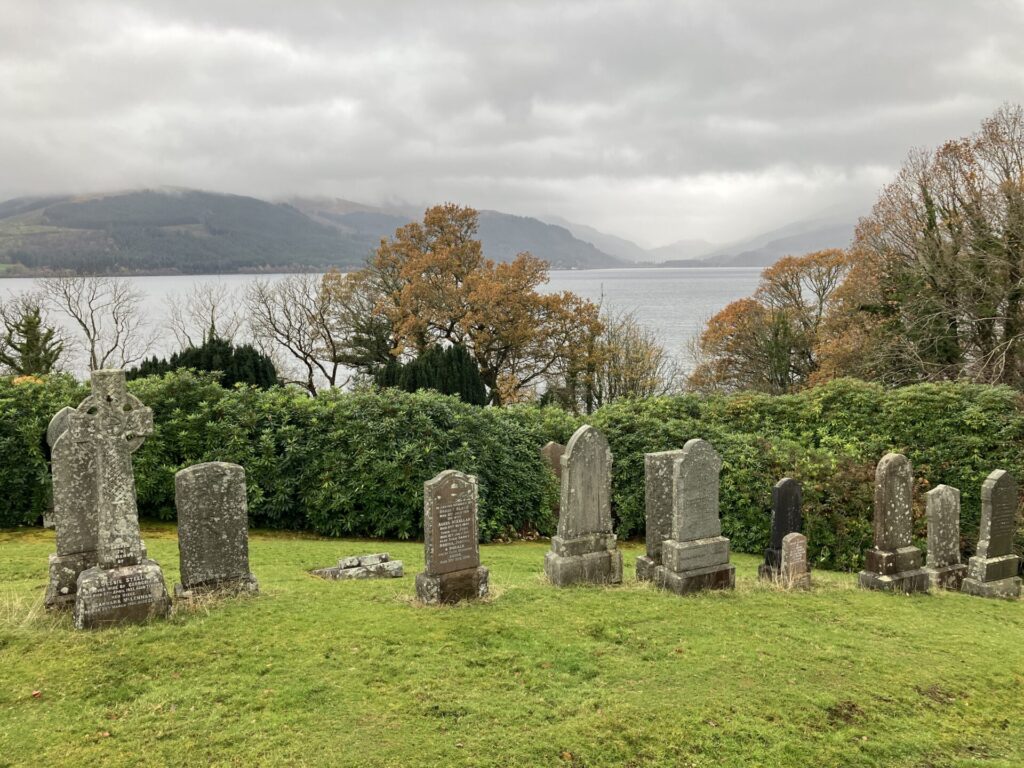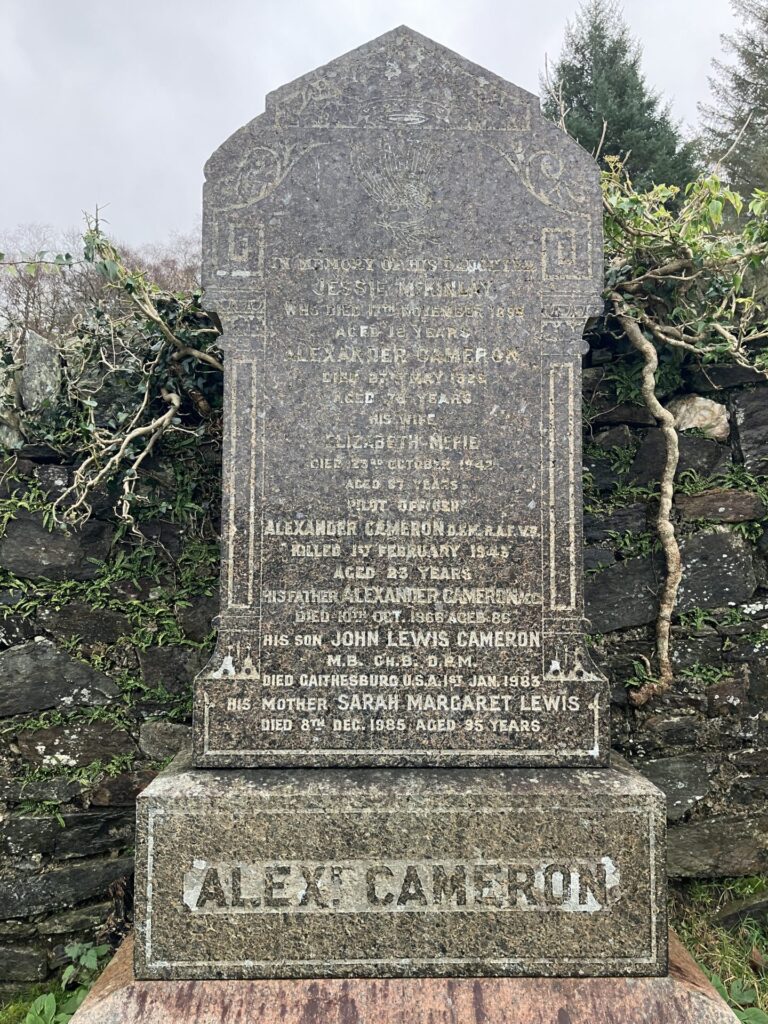| Surname: | Cameron |
| Forename(s): | Alexander (Alistair) |
| Rank: | Flying Officer |
| Service number: | 127843 |
| Regiment: | Royal Air Force Volunteer Reserve |
| Date of death: | 1 February 1943 Aged 23 |
| Place of death: | Ashenden, nr Aylesbury, Buckinghamshire |
| Awards
Buried Commemorated |
Distinguished Flying Medal
Barbour Cemetery, Dunbartonshire Kingussie War Memorial, the Bomber Command Memorial, Lincoln and St Andrew’s United Free Church Memorial now in Kingussie Parish Church. |
Background
Alexander was born on the 23 September 1919 at 63 Bellwood Street, Glasgow, eldest son of, Alexander (Post Office Clerk) and Sarah Margaret m.s. Lewis who had married in Glasgow on 7 February 1918. His father at the time of his marriage was at the Dunstable Signal School, Bedfordshire. His father was described as a Lieutenant in the Army Signal School, Royal Engineers. His mother was described as a school teacher living in Dunfermline.
Alexander attended Kingussie Higher Grade School and was on the staff of the British Linen Bank, Kingussie before joining the RAF. He was said to be a “first rate golfer and a good shot.”
It is reported that Alexander’s father was the postmaster at Kingussie before moving to Grenan, Kilcreggan to be postmaster there. (when this was is not known)
In the 1921 Census Alexander, aged 1 and his family were living at Greenbank, Roseneath, Kilcreggan, Dunbartonshire.
War Record
Alexander was awarded the Distinguished Flying Medal as listed in the London Gazette of the 28 August 1942. He died on a training exercise on 1 February 1943. It is reported that his Vickers Wellington aircraft (X9798) took off from RAF Westcott for a night exercise and overshot the runway, lost control and crashed at 0013 at Ashenden, near Aylesbury, Buckinghamshire. The weather at the time, no doubt, contributed to the cause of this loss which was reported as dreadful with low cloud and rain. All five crew members were killed.
RAF Westcott opened in September 1942. The airfield was equipped with 3 concrete runways. Shortly after its opening, No. 11 Operational training Unit (OTU) moved in operating the Vickers Wellington bomber. The OTU played a major part in the training of bomber crews during World War II and as part of this training, trainees would be sent on air navigation and leaflet dropping exercises.
Alexander is buried in the family grave at Barbour Cemetery, Dunbartonshire overlooking Loch Long. He is also commemorated on the Bomber Command Memorial, Lincoln. https://losses.internationalbcc.co.uk/loss/103528/

